Tech
Apple's future: A look at M1-powered MacBook Air, MacBook Pro and Mac mini – MobileSyrup
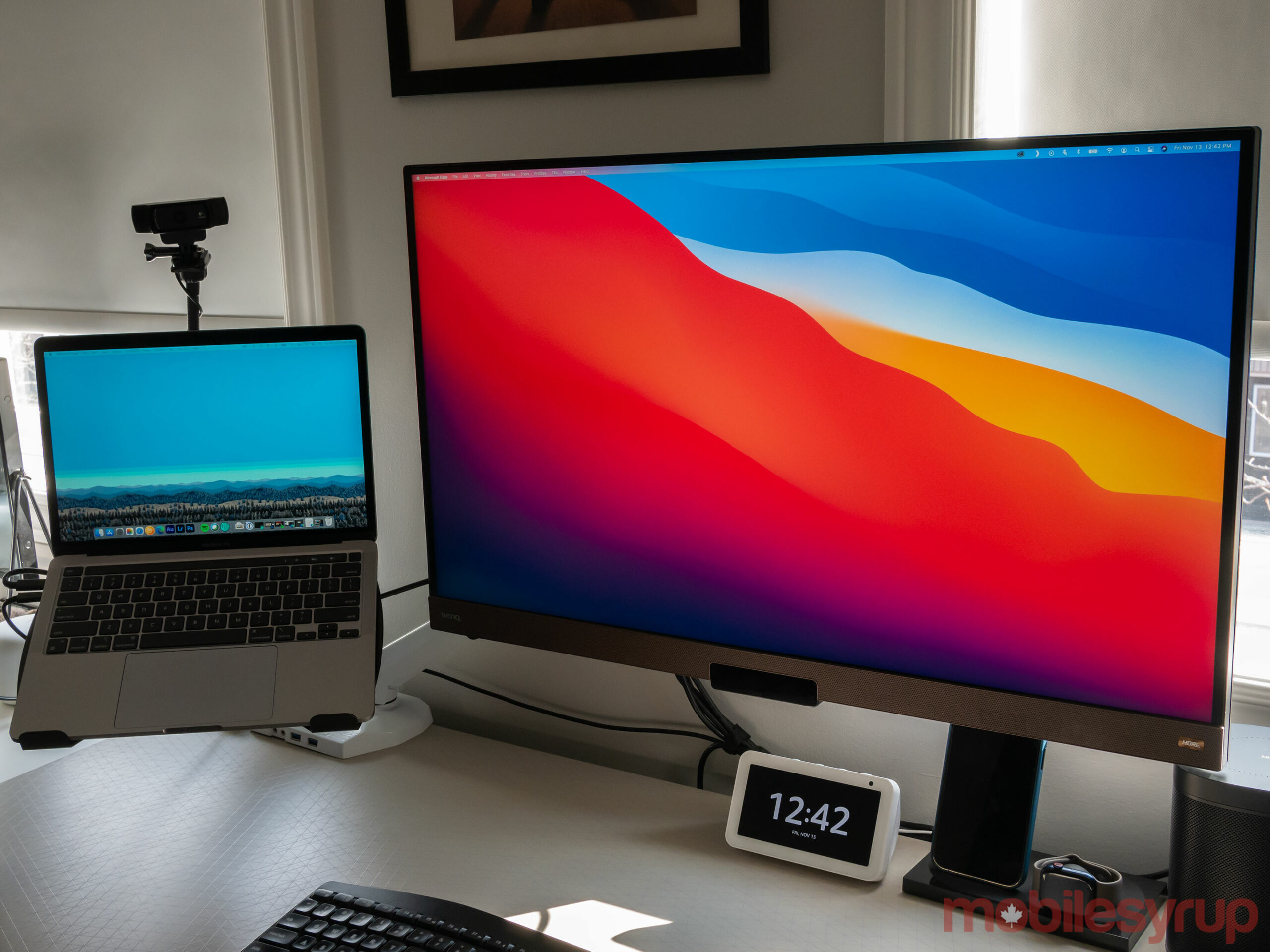
After years of rumours, Apple’s first ARM-based M1-powered Mac devices have finally arrived.
While early reports indicated that Apple would start the two-year transition to its own proprietary silicon by releasing a refreshed version of the now-dead 12-inch MacBook, the tech giant has instead jumped in head-first with a wide range of new M1 Macs.
Likely because they’re the tech giant’s most popular devices, Apple has released three M1-powered Macs: the MacBook Air, the 13-inch MacBook Pro and the Mac mini.
Apple, as expected, makes lofty claims about its first ARM-based system-on-a-chip (SoC). The chip itself is one of the first in the industry to be designed with 5-nanometer technology. Further, instead of individual chips for the CPU, GPU, security, I/O and memory, the M1 combines everything onto a single discrete SoC.
While this has several benefits, it primarily allows a Mac’s various components to communicate more effectively.
Though I’ve only spent a brief amount of time with all three new Macs, including the MacBook Air, the 13-inch MacBook Pro and the Mac mini, most of Apple’s claims regarding its new chip seem accurate (more on this later).
Apple says that its 8-core CPU features four high-performance cores and four high-efficiency cores, offering an up to 3.5x increase in CPU performance. On the GPU side of the equation, the 7- or 8-core GPU (the entry-level MacBook Air features a 7-core GPU due to chip binning) amounts to up to 6x faster graphics performance across the board.
There’s also a 16-core Neural Engine capable of computing 11 trillion operations per second, and 16GB of RAM built directly into the M1 chip.
Make no mistake, what Apple has accomplished with the M1 chip feels, at least in some sense, like a generational leap forward for the Mac line in terms of raw power.
That said, the transition away from Intel’s chips isn’t entirely smooth.
Note: This story is a brief look at Apple’s M1 chip and new Mac devices. I’ll have full reviews of some of Apple’s M1-powered Mac computers in the coming months.
Rosetta II emulation and growing pains
For apps to truly take advantage of Apple’s new chip, they need to be entirely redesigned to run off the M1.
While the tech giant’s entire software suite, including Final Cut Pro, Logic Pro, Xcode, Create ML, FaceTime and more, have been optimized for the M1 chip, the majority of major third-party app developers still need to update their software. That said, there are some M1 versions of third-party apps already available, including DaVinci Resolve and Pixelmator Pro 2.0.
For many, however, the M1 version doesn’t exist or is still in the works. This includes Adobe’s entire Creative Cloud software suite, which I use daily to do my job. Lightroom support is coming soon, and Photoshop will arrive at some point in 2021. When the rest of the Adobe CC suite will transition to Apple’s M1 chip remains unclear.
The same can be said about nearly all the software I use on my MacBook Pro, including Microsoft’s Edge browser, GIF Brewery, Private Internet Access, Logitech Options and more. Google Chrome also doesn’t have an M1 version. As for Edge, it’s worth noting that Microsoft maintains a version of the browser compatible with ARM-based CPUs for Windows devices like the Surface Pro X, so it’s possible an M1 variant for Mac computers isn’t far off.
This Intel-based software is emulated through Apple’s new Rosetta 2 platform, an evolution of the Rosetta software the company used during the transition from PowerPC to Intel processors back in 2006.
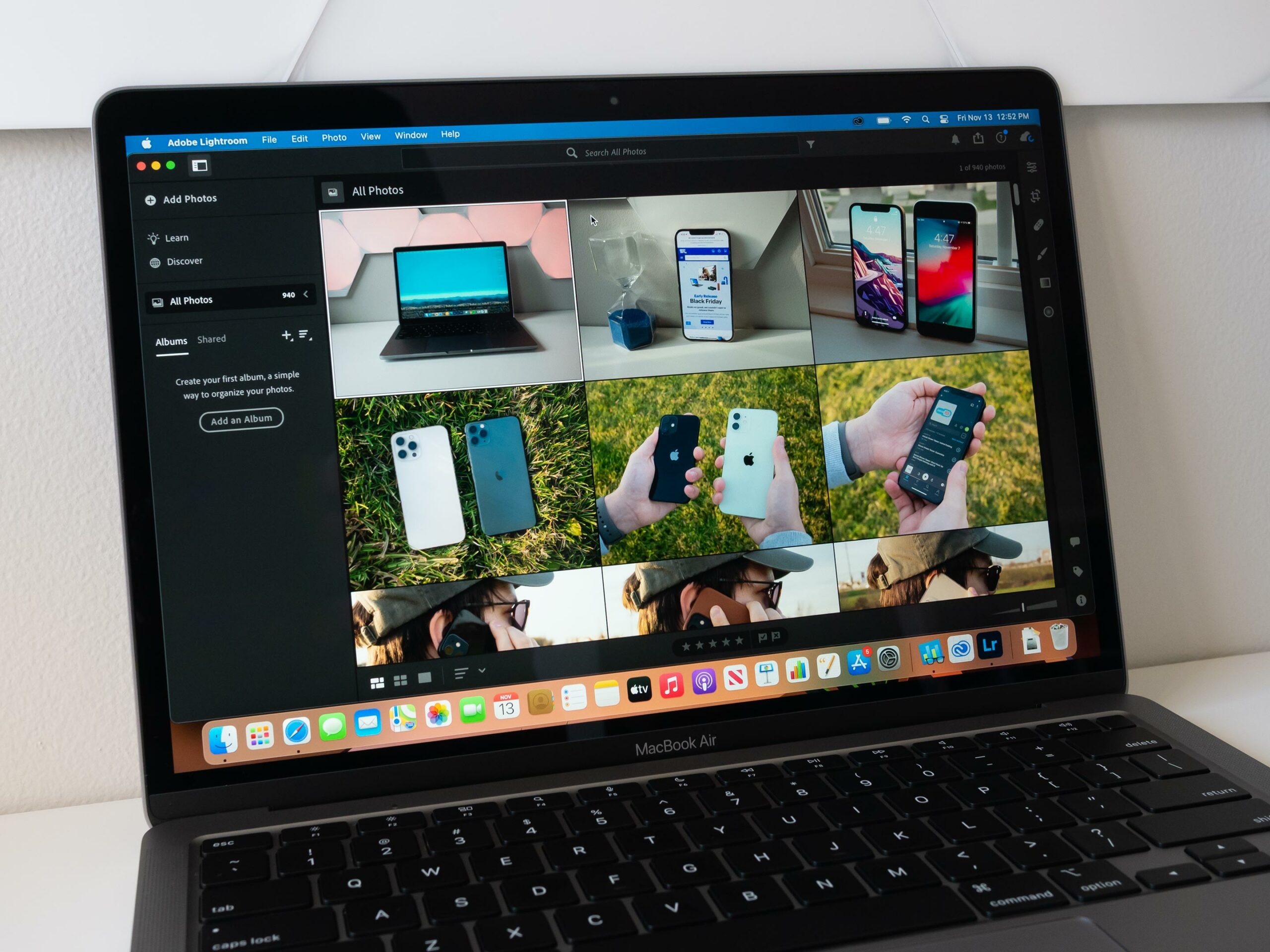

While Rosetta 2 makes an admirable effort to emulate Intel Mac software, the experience isn’t perfect. Launching each app for the first time typically results in it taking twice as long to load, especially when it comes to Adobe’s CC apps like Photoshop and Lightroom. Once the apps are open, performance is roughly on par with my experience using the apps with the Intel i5 13-inch MacBook Pro (2020) I typically use. However, I did encounter the occasional bout of lag when working with multiple RAW image files.
I’ve also experienced several issues with Logitech Options, the Mac software I use to connect the company’s M720 mouse and K850 keyboard via a USB unifying receiver. Likely because Logitech’s connection software is being emulated, both the keyboard and mouse experience lag when connected to Apple’s USB-C-to-USB-A adaptor and the third-party USB-C-to-A hub I’ve been using for several months. Bypassing the unifying receiver and connecting directly through Bluetooth seems to solve the problem, but I still encounter the occasional mouse pointer stutter.
Then there’s Microsoft’s Edge browser, which, unsurprisingly, is still designed for Intel Macs. I do most of my day-to-day job within Edge, including accessing web-based apps like Slack, WordPress, Gmail and more. Of course, I could switch to the M1 version of Safari, but it would be a lot of work to shift everything over to Apple’s browser. While Edge runs decently through Rosetta 2, it does feel slightly sluggish at times, especially when launching apps like Slack and Gmail.
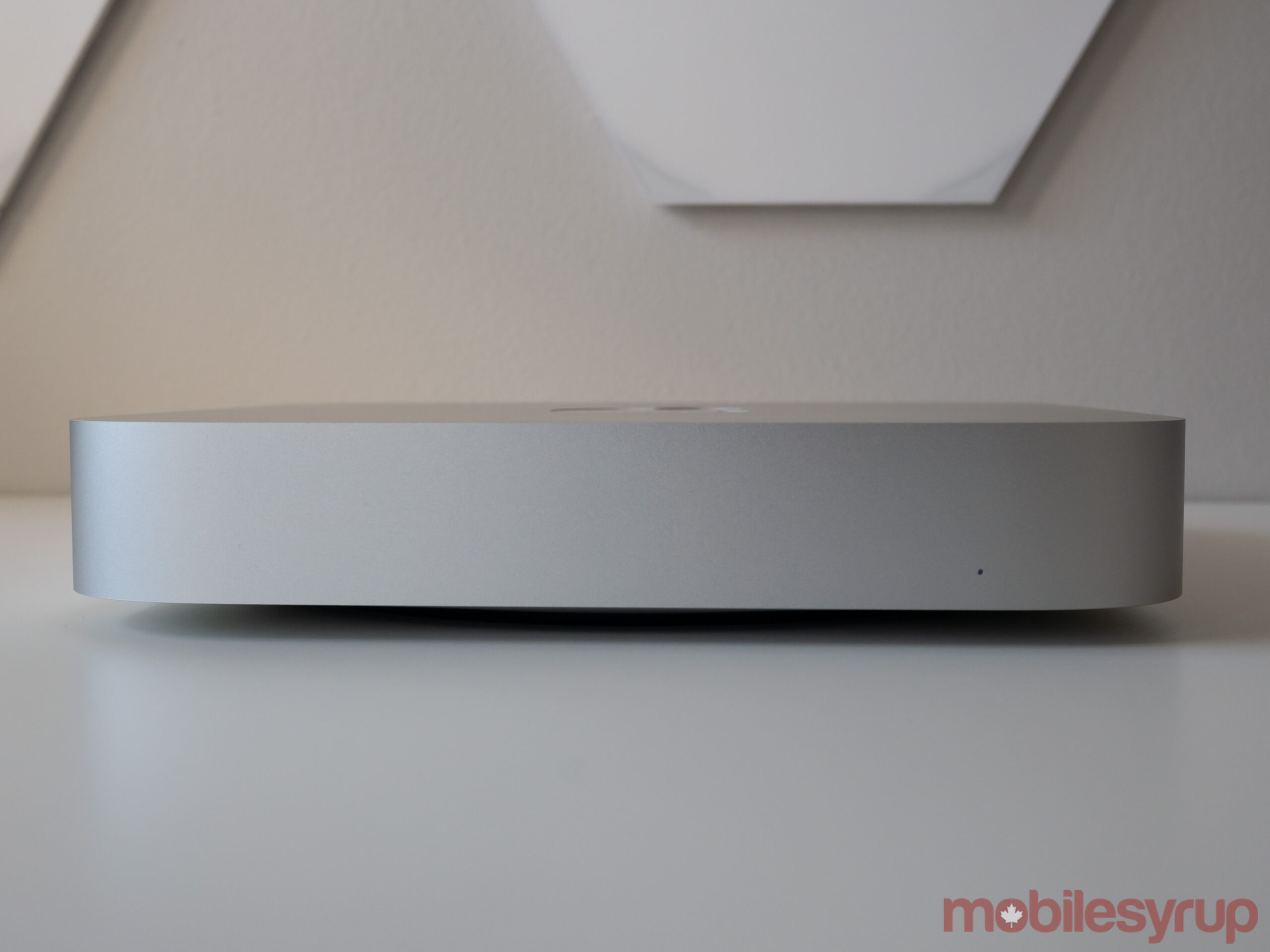

It’s also worth noting that restoring a new M1 Mac from a Time Machine backup is both time-consuming and somewhat frustrating. Following the restoration, the M1 MacBook Pro locked up several times. In fact, some Adobe CC apps wouldn’t even open initially until I restarted the computer. I’d suggest doing a clean install if you’re moving from an Intel to an M1-based Mac.
To be fair, these issues will start to disappear as more app developers port their software over to Apple’s M1 chips. The issue is it’s unclear how long that’s going to take.
The first M1 Macs
All three devices, including the MacBook Air, 13-inch MacBook Pro and the Mac mini, all look identical to their Intel counterparts.
Apple will almost certainly subtly change the design of all three devices since the architecture of the M1 probably gives it the ability to reconfigure the look of the Air and MacBook Pro. Unfortunately, that hasn’t happened yet.
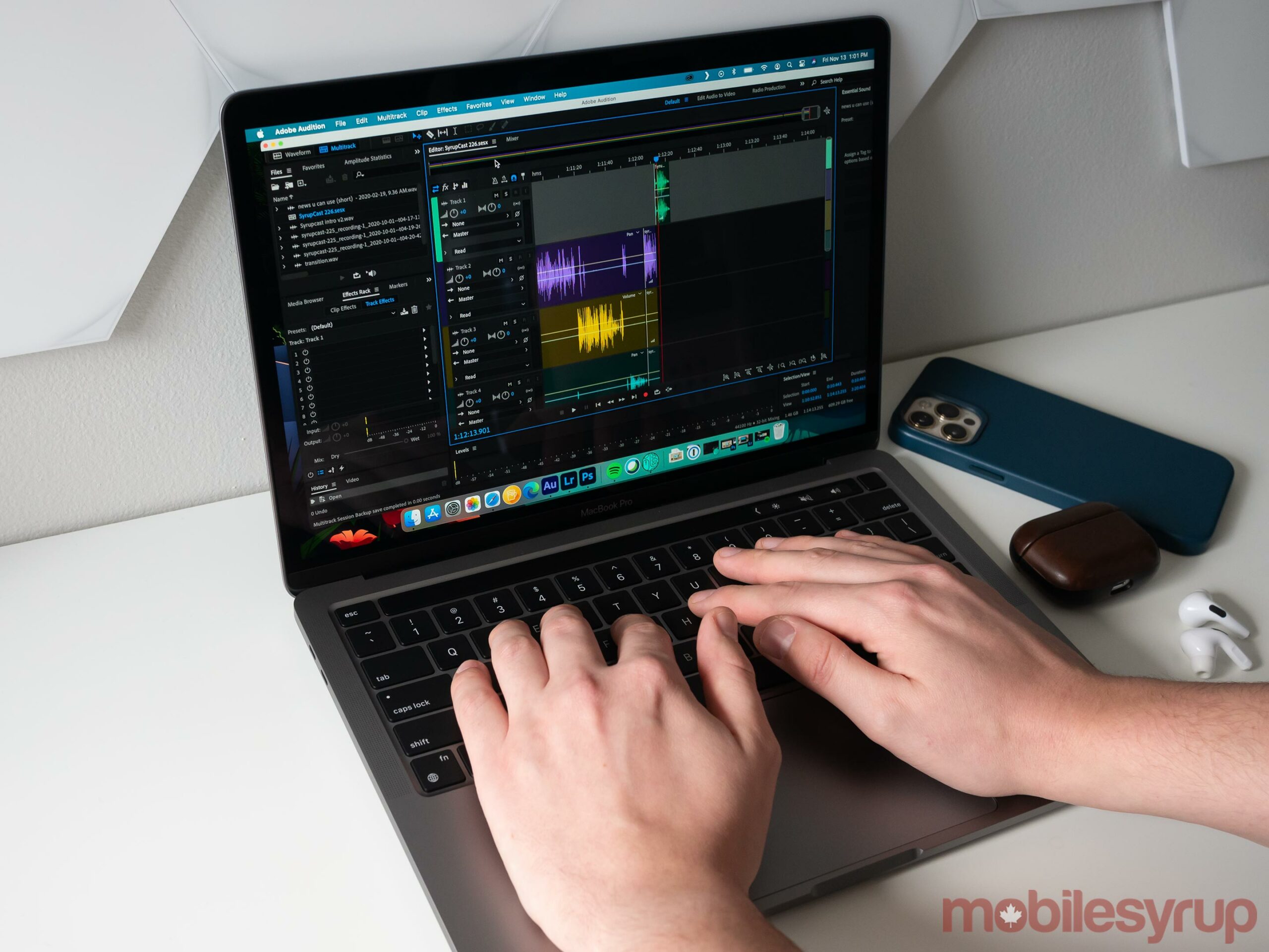

The Mac mini looks the same as its Intel-based counterpart, and so does the MacBook Air. The M1 MacBook Pro, on the other hand, replaces the entry-level Pro that only features two USB-C Thunderbolt 3 ports.
The fact that the new M1 MacBook Pro only features two USB-C ports is strange and disappointing. Apple claims that it opted for two ports simply because the new M1 Pro replaces the two-port Intel variant. While true, it’s also likely a limitation of Apple’s M1 processor to some extent, or possibly related to its license to use Intel’s Thunderbolt technology.
This forced me to reconfigure my work from home setup considerably. First, my USB-C-to-USB-A hub needed to be moved to the laptop’s left side along with the USB-C cable I used to connect to my 32-inch 4K BenQ EW3280U monitor. Further, when both of these devices are connected, I’m unable to use my USB-C SD card reader, forcing me to use a USB-A SD card reader with my hub.
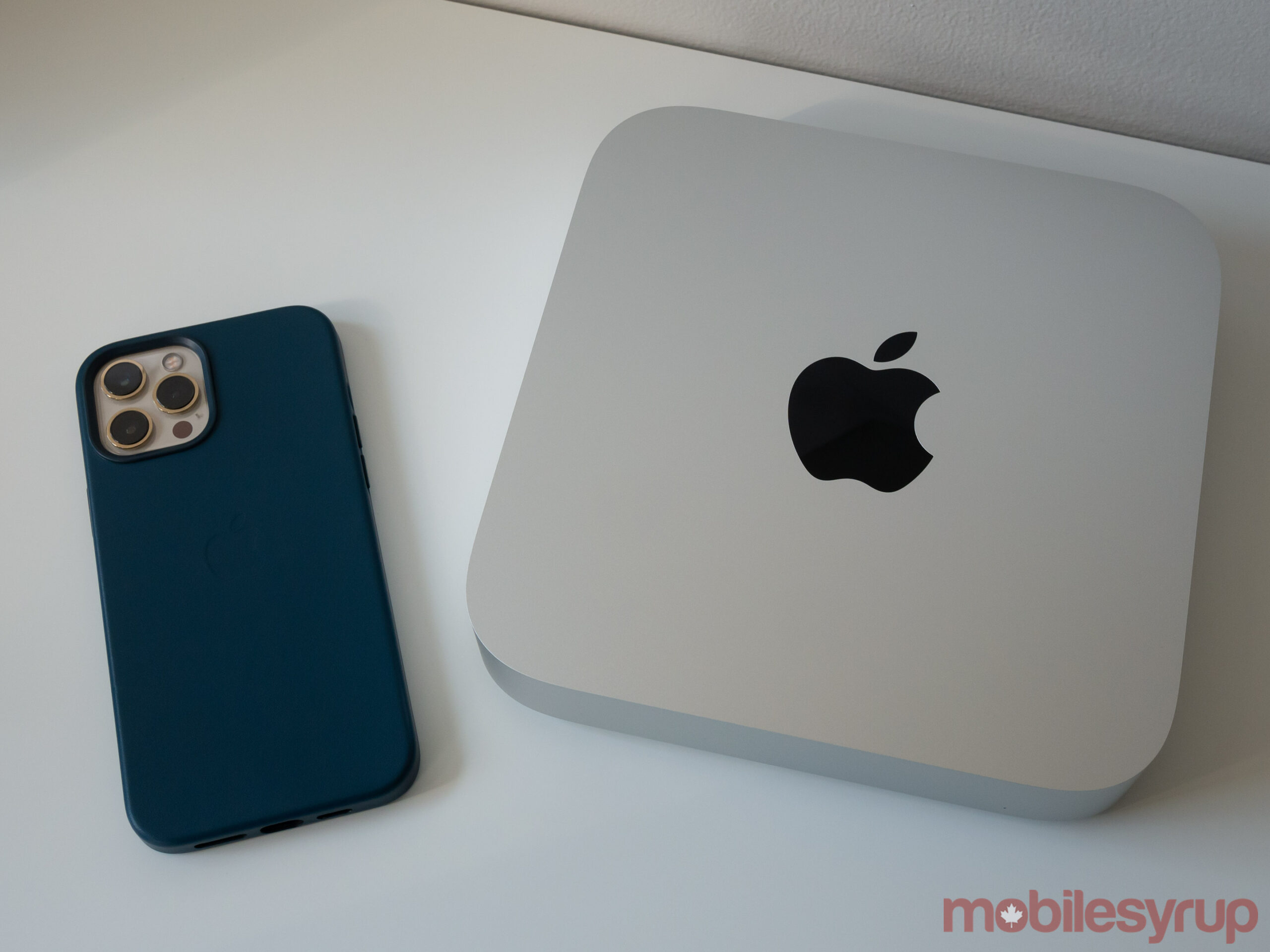

There’s also a power issue with my USB hub where as soon as I plug the USB-C card reader in, it disables the Logitech Unifying receiver. I realize that these issues are specific to me, but other people will likely experience similar problems if they plan to make the jump from a four USB-C port MacBook Pro to a two USB-C port M1 MacBook Pro.
Since the MacBook Air also only features two USB-C/Thunderbolt 3 ports, I experienced the same issues with Apple’s lightweight laptop.
While minor inconveniences in the grand scheme of things, in the era where many of us work from home, pain points like this are frustrating.
It’s also worth noting that all of Apple’s M1 devices can only be configured with 16GB of RAM, which seems to be a limitation of the M1’s architecture.
All M1 devices feature the same processor
The first thing to note about Apple’s first M1 Macs is that the MacBook Pro and the Mac mini are technically more powerful than the MacBook Air.
While all three new M1-powered Macs feature the same CPU and GPU and can theoretically run at identical speeds, the fact that the MacBook Pro and the Mac mini feature a fan, allows the computers to run at peak performance for longer. On the other hand, the MacBook Air doesn’t feature a fan and, as a result, features cooling that isn’t as efficient as Apple’s other two M1 launch computers.
Generally, modern CPUs run faster when they feature better cooling.


While I haven’t spent that much time with the new M1 Macs, this seems to be accurate based on the benchmarks (seen below) and my actual experience with the devices. For example, I connected the M1 13-inch MacBook Pro to my 4K monitor, opened Lightroom CC, Photoshop CC and edited several RAW images. On top of this, I played a 4K video from YouTube on my monitor and had several Edge windows running simultaneously.
While this would normally result in my 13-inch MacBook Pro (2020) with an Intel Core i5 processor and 16GB of RAM lagging quite a bit, the new M1 MacBook Pro’s fans didn’t turn on for several minutes and I didn’t experience any slowdown. I experienced similar results with the new M1 Mac mini, which also features a physical fan.
When performing this same experiment with the M1 MacBook Air, the fans turned on almost immediately. While things did run more smoothly with the new Air when compared to its Intel counterpart, there were instances where I’d be stuck with a spinning beach ball for several seconds, especially with Adobe’s software.
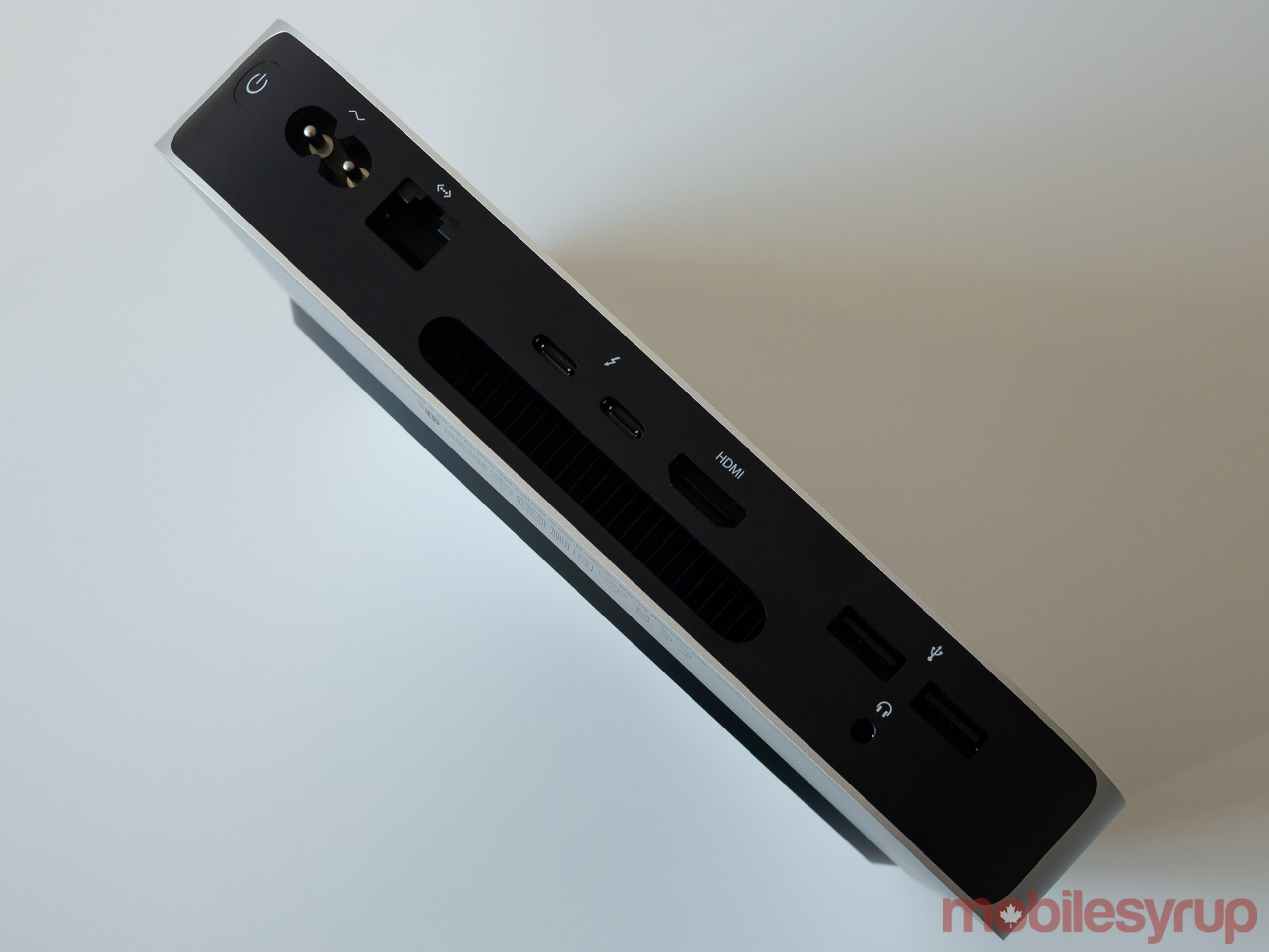

It’s important to note that all of this software is being emulated through Rosetta II. It will be interesting to see how the real-world performance changes once the apps I most frequently use get dedicated M1 versions.
Though battery life seems improved across all three devices, it isn’t easy to definitively know if Apple’s claims are accurate given I’m emulating software via Rosetta 2. On paper, Apple says the MacBook Air with M1 can get 15 hours of web browsing and 18 hours of Apple TV app movie playback (it’s unlikely most Mac users will only be watching video through the Apple TV app). The MacBook Pro, which features a larger 58.2Wh battery compared to the MacBook Air’s 49.9Wh, can get up to 17 hours of web browsing and 20 hours of Apple TV movie playback.
Battery life does seem improved across the board and in some ways, reminiscent of the classic Macbook Air from several years ago, though more testing is definitely necessary. I can say that I wrote most of this feature and edited photos for it with the M1 MacBook Air, and the battery still had 30 percent left after starting from nearly a full charge and working from roughly 11 noon to 6pm. This is very impressive and well beyond what the Intel MacBook Air is capable of.
One major question that still remains surrounding Apple’s new M1 Macs is when the tech giant plans to introduce GPUs that aren’t integrated into the M1 chip. Though it’s still unclear, the tech giant likely plans to do this with the 16-inch MacBook Pro with M1 when it inevitably appears likely in early 2021.
M1 benchmarks are impressive
Though benchmarks don’t always tell the full story when it comes to devices, and this is especially apparent with Apple’s new M1 Macs given nearly all apps are still emulated, they still show off what a true generational leap the M1 is when it comes to the future of Apple’s Mac line.
Across the board, the single-core and multi-core performance of the M1 is well beyond what I expected.
MacBook Air
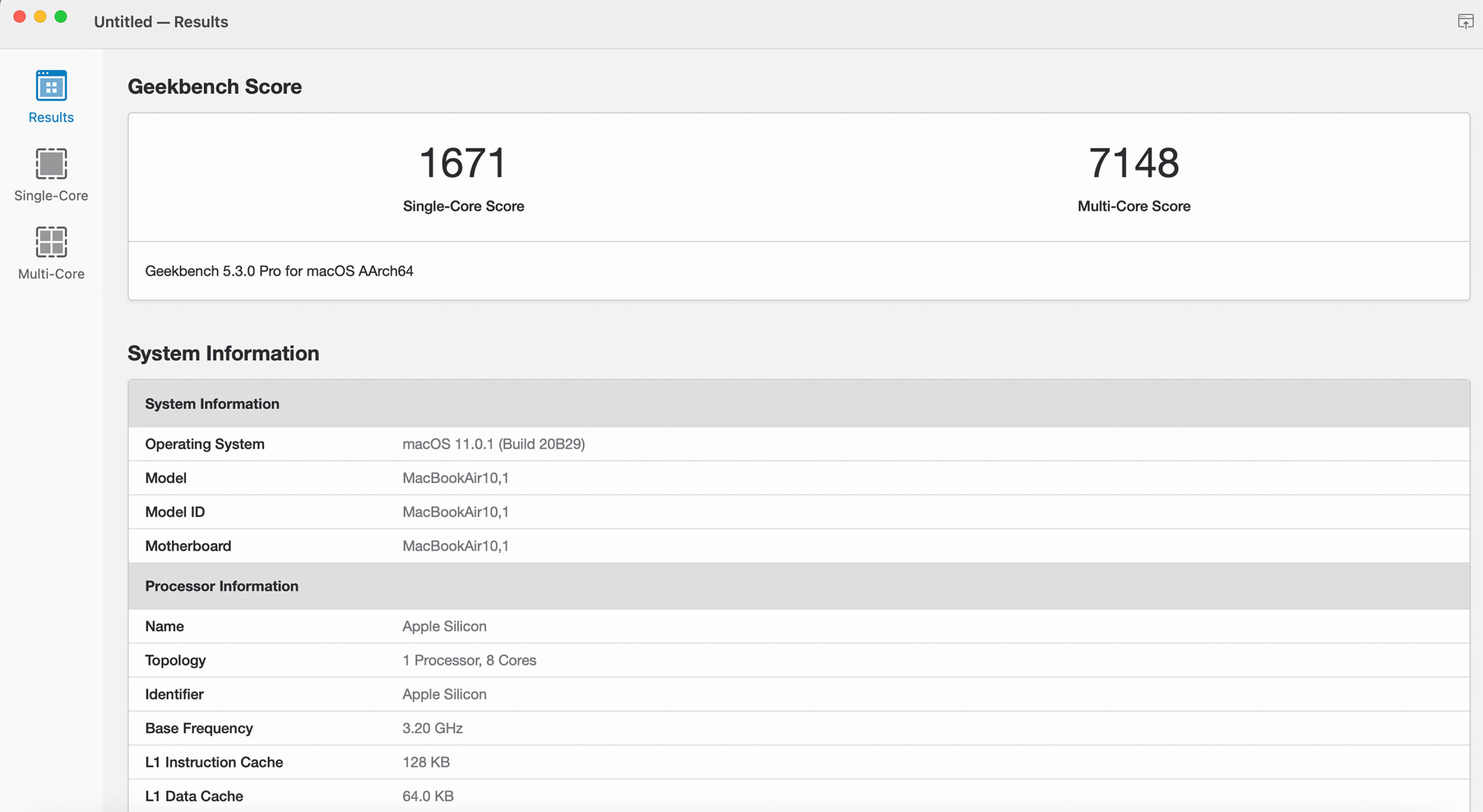

The MacBook Air with M1 hits 1,671 for single-core and 7,148 for multi-core performance. This, shockingly, makes it more powerful than the 16-inch MacBook Pro (2019) with an Intel Core i9-9980HK processor in terms of multi-core performance, which comes in at 6,880.
Regarding single-core performance, the MacBook Air with an M1 chip comes in at 1,588, which is well above the Intel Core i5-1038NG7 13-inch MacBook Pro (2020) (1,147), the laptop I use every day.
MacBook Pro


Apple’s 13-inch MacBook Pro with M1 hits 1,611 for its single-core score and 7,408 for its multi-core score.
In terms of multi-core performance, this is higher than the 6,880 the 16-inch MacBook Pro (2019) with an Intel Core i9-9980HK is capable of achieving and even surpasses the 27-inch iMac with an Intel Core i9-9900K processor (8,273).
This makes the laptop substantially more powerful than the Intel Core i5-1038NG7 13-inch MacBook Pro (2020) I use as my daily driver (1,147) and even the 27-inch iMac (2020) (1,248), in terms of single-core performance.
Mac mini
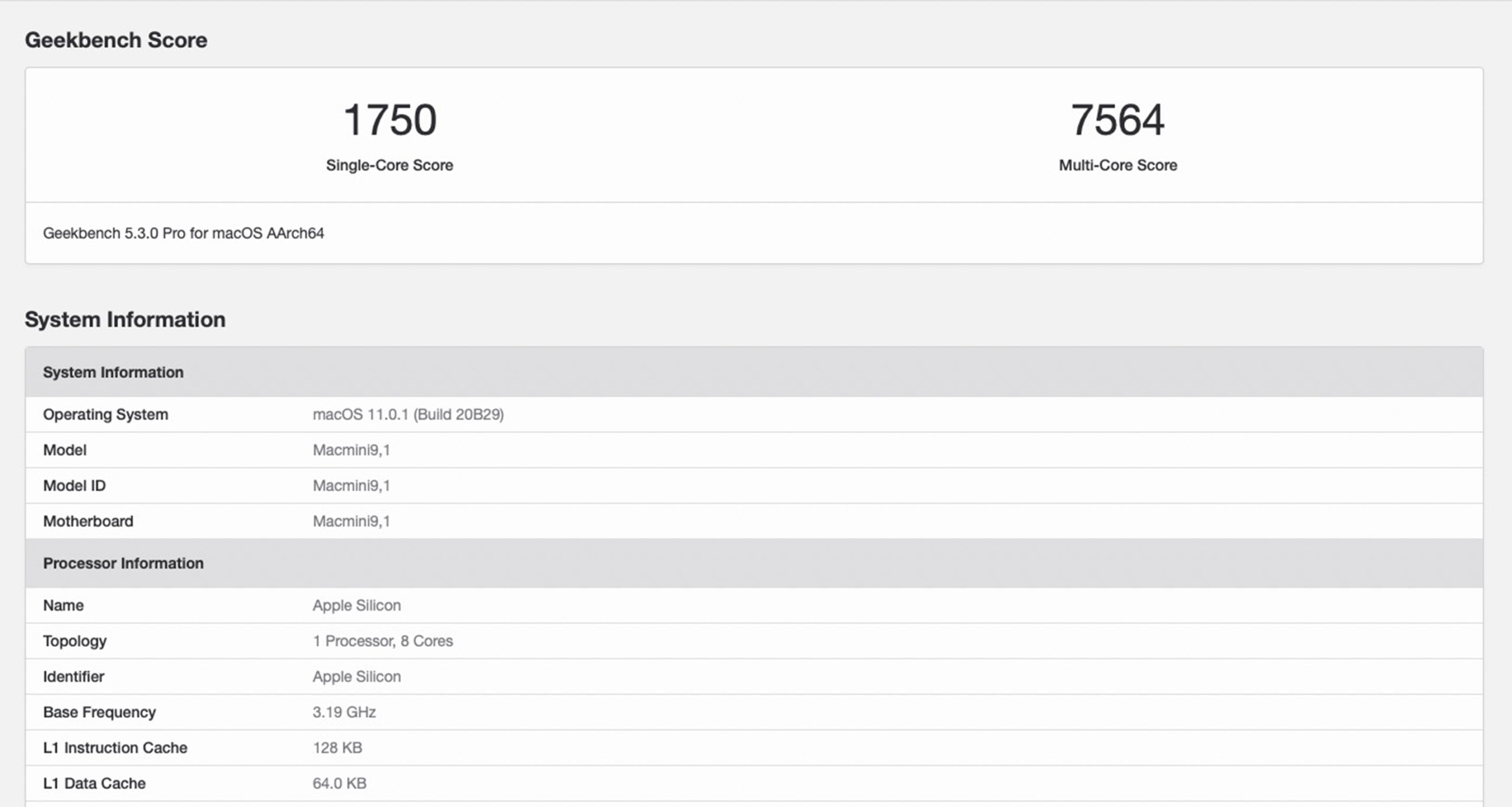

Finally, Apple’s M1 Mac mini hits 1.750 for single-core and 7,564 for its multi-core score. This puts it just below the 27-inch iMac (2019) with an Intel Core i9-9900k processor, which hits 8,273 for multi-core, but above the 16-inch MacBook Pro (2019) with an Intel Core i9-9980HK processor (7,989). It’s also way above the Mac mini (2018) with an Intel Core i7-8700B processor (5,495).
Similar to every other M1 device, this puts the Mac mini above the 27-inch iMac (2020)’s 1,248 single-core score and leagues ahead of the Mac mini (2018) with an Intel Core i7-8700B processor (1,102).
Should you buy an M1 Mac now?
The answer to this question is somewhat difficult. While the performance of Apple’s new M1 Mac line is undeniably impressive, Rosetta 2 emulation still needs work. This means that those who live in a world where they only use Apple’s own apps and services — and a lot of people do — the transition will be fine, and they’ll really appreciate the additional hardware power and battery life the M1 offers. For everyone else, it’s likely worth waiting until more third-party developers release M1 optimized apps.
In my particular case, Adobe’s CC suite is the missing link with the new M1 Macs. We know that Adobe’s most popular apps will likely get dedicated M1 versions, but it’s unknown when that will happen. MobileSyrup reached out to Adobe for more information regarding Creative Cloud’s release on M1 Macs and did not receive a response from the company.
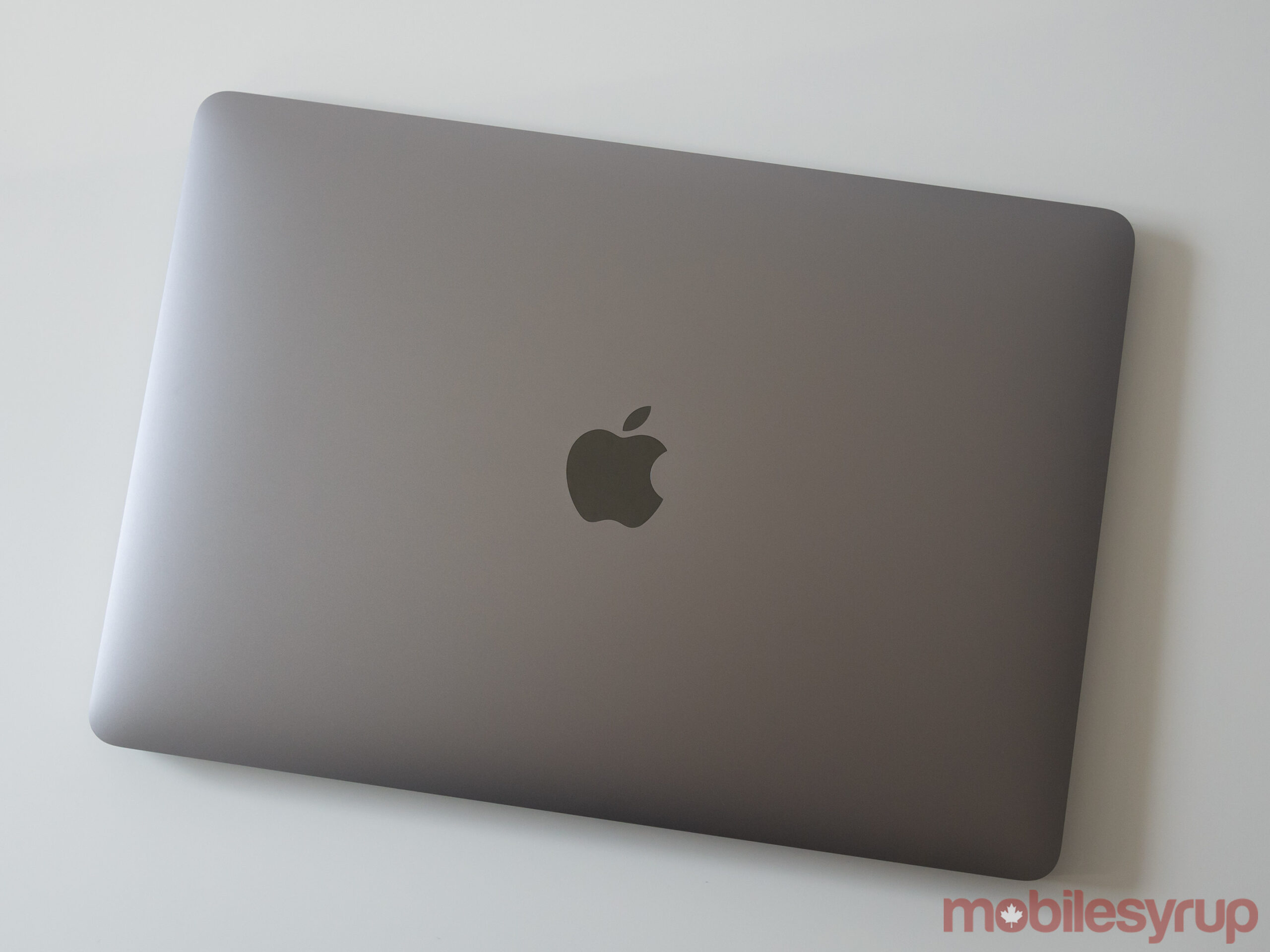

Further, Microsoft releasing an M1 optimized version of its Edge browser would also help convince me to switch to an M1 Mac since moving between browsers is often a little tedious. Yes, I could switch to Safari, but I also work on Android and Windows devices, so this would ruin my ability to jump between platforms.
It’s also still unclear if Apple’s Universal App strategy that allows iOS and iPadOS apps to run on M1 Macs natively will pay off because they’re not yet widely available. While it will be great to see the macOS app ecosystem expand significantly, every touchscreen-based app likely won’t translate that well to mouse/trackpad input. That said, the introduction of mouse/trackpad compatibility on iPadOS will hopefully help make iPad apps translate better to macOS.
With all that said, it’s clear the M1 is the future of Apple’s Mac line — unfortunately, as expected, there’s just going to be growing pains for the next few months.
The new 13-inch MacBook Pro with M1 starts at $1699 for the 8GB of RAM, 256GB of storage iteration. Apple is still selling Intel-based versions of the MacBook Pro. The 8GB, 256GB of storage MacBook Air with M1 starts at $1,299. The M1 version of the Air replaces the Intel variant. Finally, The base-level M1 Mac mini now starts at $899 and ranges up to $2,149 if you add the 2TB hard drive and 16GB of RAM add-ons. Apple is still selling the 6-core Intel-based Mac mini for $1,399 CAD.
Tech
Meta Expands VR Operating System to Third-Party Hardware Makers – MacRumors


Facebook parent company Meta today announced the upcoming expansion of Meta Horizon OS, a virtual and augmented reality operating system that will be available to third-party hardware manufacturers that want to design their own headsets.
Right now, Meta sells the Quest line of headsets, but the company wants to provide the software for third-party VR and AR products in the future, much like Microsoft offers Windows for all manner of third-party PCs.
Meta Horizon OS is the mixed reality operating system that Meta created for its own Quest headsets, and it has support for eye, face, hand, and body tracking along with passthrough, spatial anchors, scene understanding, and other features. There is a “social layer” that will allow the identities, avatars, and friends of users to move between virtual spaces on different devices.
According to Meta, multiple companies are working on devices that will use Meta Horizon OS. ASUS ROG is developing a performance gaming headset and Lenovo is working on mixed reality devices for productivity, learning, and entertainment. Meta says that it is also creating a limited edition version of Meta Quest in partnership with Xbox.
With the expansion of Meta Horizon OS to third-party hardware manufacturers, Meta is making it easier for any developer to ship VR software on the platform by removing barriers between the Horizon Store and App Lab.
By creating an operating system that can be used by other hardware manufacturers, Meta is inserting itself into the growing AR/VR ecosystem and creating opportunities for it to outpace Apple in mixed reality development. Apple launched the Vision Pro headset earlier this year, but software is lacking given the high price and limited distribution of the device.
According to a report from earlier today, interest in the Vision Pro is already waning at Apple’s retail locations with fewer people requesting demos.
Tech
Brian's Randoms from Sea Otter 2024 – Pinkbike.com


There have been more launches in the past two weeks than any other two-week period I can remember since I started sweeping floors at Freedom Bike Shop back in 2001. Yes, that means I’m very old. It also means that after several years of delayed product releases, some brands have finally cleared out enough inventory to share what they’ve been working on.
The Pinkbike team came down to Sea Otter this year with mixed expectations, and there were definitely some weird vibes. Everyone is concerned for the remaining Kona employees, and more than one brand expressed that their plan is to #surviveto2025. But overall we loved catching up with everyone, the weather was great, and somehow there was even more gear to cover. The industry might be going through a tough time, but ultimately riding bikes is still ridiculously fun and bike tech is as interesting as ever.
And on that note, here are a few of the random things that caught my eye during the show.
OutsideBrendan works smarter not harder, and dog Bubbie(?) is awesome.
I mistakenly thought it was a garage project kind of thing, but it’s a real brand with a promo video and everything.
And with that, it’s time to face my expense report. Until next year, Sea Otter!
Tech
We tried these three beauty products this week. Here are our thoughts – Vancouver Sun


Reviews and recommendations are unbiased and products are independently selected. Postmedia may earn an affiliate commission from purchases made through links on this page.
Article content
Skin Caviar Eye Lift Serum
They say: A luxury serum that firms, smooths and lifts the eye area. The dual-chamber product features the Swiss skin-care brand’s Cellular Complex to ‘restore youthfulness to the eye contour,’ along with a blend of caviar components.
We say: Our tester applied one pump of this serum to the eye area daily. Gently dabbed onto skin, the serum gave an instant boost of hydration. The liquid-serum formula was lightweight and non-sticky, providing an easy base for any additional skin-care or makeup products. With use, our tester reported fine lines and firmness were noticeably improved.
Article content
$760 | Holt Renfrew, holtrenfrew.com
Marc Anthony
Strictly Curls Curl Envy Leave-In Conditioner
They say: A leave-in hair conditioner formulated for curly hair. Boasting strand-smoothing ingredients such as avocado oil, Vitamin E and shea butter, the spray can be used on course, fine, thick or thin curls to promote softness, fight frizz and lock in hydration.
We say: Our tester spritzed this conditioner on her ultra-curly, frizz prone coif. The spray format makes application easy and mess-free. Used both as a de-tangler on freshly washed hair and as a curl pick-me-up in between washes, she found it left curls looking formed, smooth and not stiff.
$12.97 | Mass retailers, walmart.ca


Ghlee
Lip Balm
They say: A nourishing lip balm that features antioxidant-rich ghee, along with mango seed butter and Vitamin E to hydrate lips. Available in Original, Rose, Chai, Mango-Papaya and Mint.
We say: This lip balm gives a dose of smoothing hydration with one swipe. Our tester loved the rose iteration, which boasted the scent of a fresh bloom. It’s the kind of balm you keep reaching for in your bag, she reports.
Share this article in your social network
-
Business11 hours ago
Honda to build electric vehicles and battery plant in Ontario, sources say – Global News
-



 Science11 hours ago
Science11 hours agoWill We Know if TRAPPIST-1e has Life? – Universe Today
-
Investment15 hours ago
Down 80%, Is Carnival Stock a Once-in-a-Generation Investment Opportunity?
-
News16 hours ago
Honda expected to announce multi-billion dollar deal to assemble EVs in Ontario
-
Business23 hours ago
Elon Musk comments on Tesla’s pricing strategy following cuts – TESLARATI
-
Art21 hours ago
‘Luminous’ truck strap artwork wins prestigious Biennale prize in first for New Zealand – The Guardian
-



 Sports21 hours ago
Sports21 hours agoJets score 7, hold off Avalanche in Game 1 of West 1st Round – NHL.com
-



 Health11 hours ago
Health11 hours agoSimcoe-Muskoka health unit urges residents to get immunized





